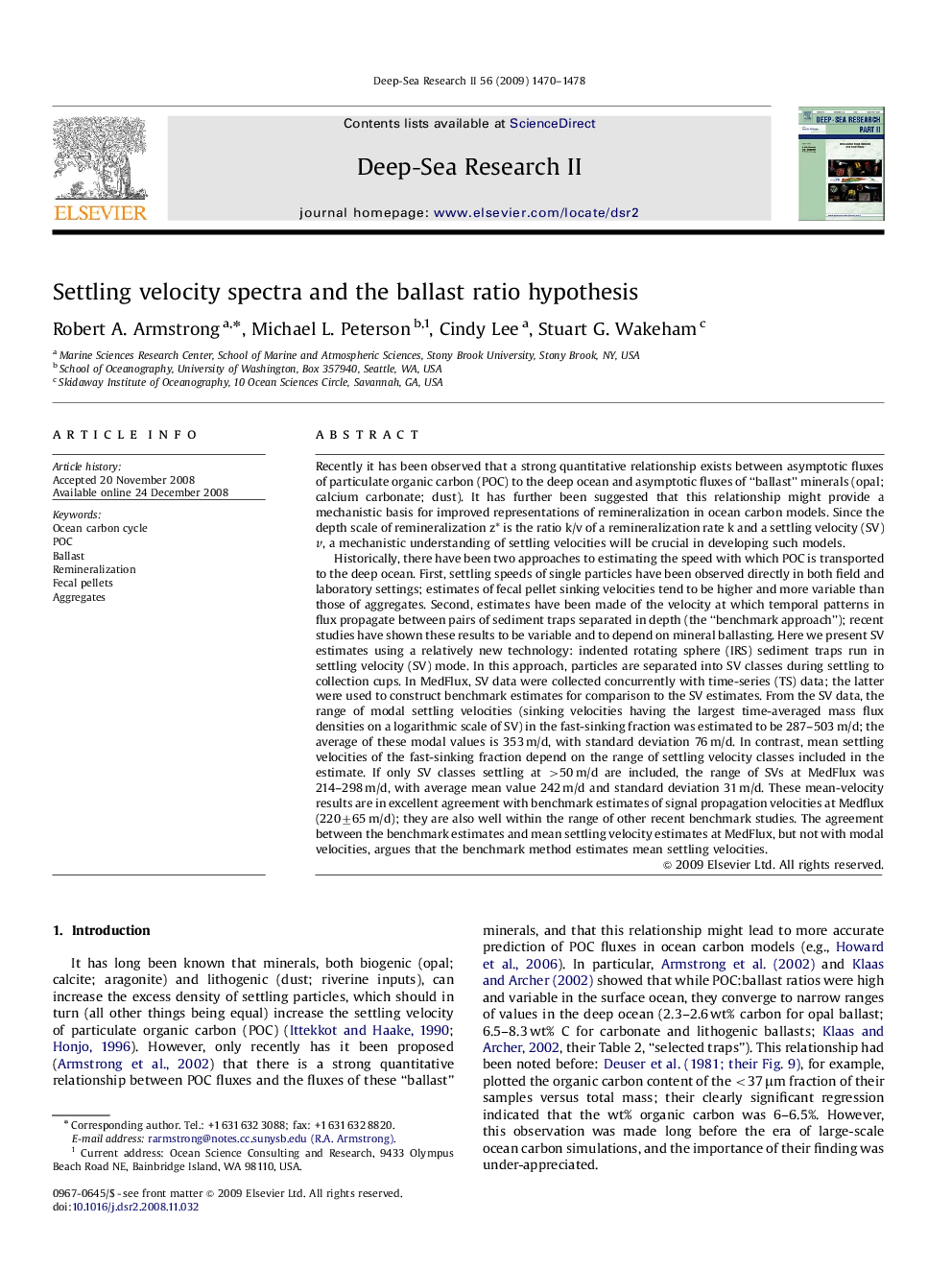| کد مقاله | کد نشریه | سال انتشار | مقاله انگلیسی | نسخه تمام متن |
|---|---|---|---|---|
| 4537374 | 1326366 | 2009 | 9 صفحه PDF | دانلود رایگان |

Recently it has been observed that a strong quantitative relationship exists between asymptotic fluxes of particulate organic carbon (POC) to the deep ocean and asymptotic fluxes of “ballast” minerals (opal; calcium carbonate; dust). It has further been suggested that this relationship might provide a mechanistic basis for improved representations of remineralization in ocean carbon models. Since the depth scale of remineralization z* is the ratio k/v of a remineralization rate k and a settling velocity (SV) v, a mechanistic understanding of settling velocities will be crucial in developing such models.Historically, there have been two approaches to estimating the speed with which POC is transported to the deep ocean. First, settling speeds of single particles have been observed directly in both field and laboratory settings; estimates of fecal pellet sinking velocities tend to be higher and more variable than those of aggregates. Second, estimates have been made of the velocity at which temporal patterns in flux propagate between pairs of sediment traps separated in depth (the “benchmark approach”); recent studies have shown these results to be variable and to depend on mineral ballasting. Here we present SV estimates using a relatively new technology: indented rotating sphere (IRS) sediment traps run in settling velocity (SV) mode. In this approach, particles are separated into SV classes during settling to collection cups. In MedFlux, SV data were collected concurrently with time-series (TS) data; the latter were used to construct benchmark estimates for comparison to the SV estimates. From the SV data, the range of modal settling velocities (sinking velocities having the largest time-averaged mass flux densities on a logarithmic scale of SV) in the fast-sinking fraction was estimated to be 287–503 m/d; the average of these modal values is 353 m/d, with standard deviation 76 m/d. In contrast, mean settling velocities of the fast-sinking fraction depend on the range of settling velocity classes included in the estimate. If only SV classes settling at >50 m/d are included, the range of SVs at MedFlux was 214–298 m/d, with average mean value 242 m/d and standard deviation 31 m/d. These mean-velocity results are in excellent agreement with benchmark estimates of signal propagation velocities at Medflux (220±65 m/d); they are also well within the range of other recent benchmark studies. The agreement between the benchmark estimates and mean settling velocity estimates at MedFlux, but not with modal velocities, argues that the benchmark method estimates mean settling velocities.
Journal: Deep Sea Research Part II: Topical Studies in Oceanography - Volume 56, Issue 18, 15 August 2009, Pages 1470–1478